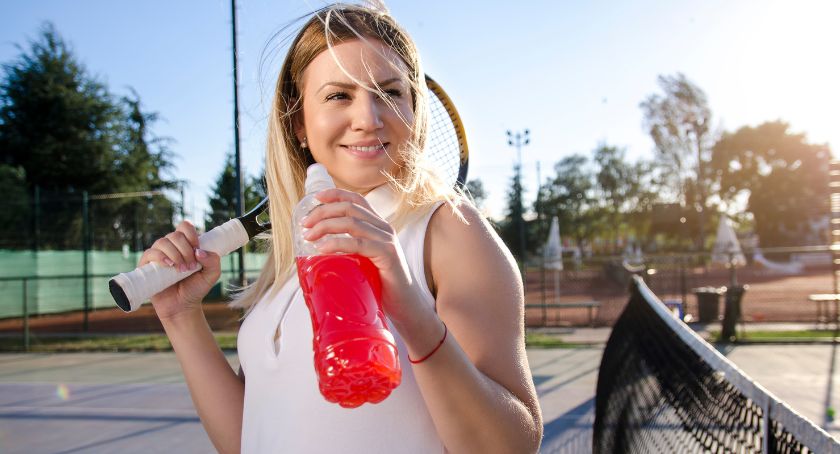Features
Aging Gets Personal: Pandemic Presents New Backdrop for Life & Health
More people adopt holistic view of wellness as they attempt to meet specific challenges of aging, and an altered reality.

By: Sean Moloughney

As people around the world grapple with the consequences of COVID-19, for themselves and their communities, health and wellness, particularly immune function, have become a central priority. While the pandemic has exposed and intensified many existing health issues, it has also led to common problems like stress, anxiety and sleep disruption, among a host of others.
Once only a focus for people who already started to feel the effects of aging, health maintenance today is relevant and personal for everyone. So what areas of health and aging are most pressing and important for consumers today? The list is seemingly endless, but still depends largely on factors like age and lifestyle.
Umbrella Issues
Consumers today are increasingly proactive and well-informed, according to Daniel Ramón Vidal, vice president, R&D Health & Wellness at ADM, as they recognize the links between different health areas and opt for preventive approaches to wellness. “For older consumers, this more holistic view is translating into increased vigilance around metabolic health factors such as blood pressure, cholesterol, diabetes, and especially weight management. While in April 2020 only 24% of U.S. consumers reported being concerned about their weight, a year on 52% said they were worried by the number on the scale (FMCG Gurus, March 2021).”
Recognizing the link between aging, abdominal fat accumulation, and the risk of developing metabolic and cardiovascular diseases, Ramón Vidal said, “consumers are taking steps to proactively manage their metabolic and immune health, with four in 10 adopting a long-term approach to health and almost a third currently dieting to lose weight.”
Eric Anderson, managing director, NXT USA, said many people have experienced the “COVID 15,” referring to the pounds many have gained during lockdowns, isolation, and disruption of exercise routines. “As we return to life and really look to get out and exercise and enjoy the outdoors again, we are sure to experience stiffness and soreness that may be associated with lack of activity as much as it is with aging. In any case, we in the West are living longer and we want to be active, mobile, and ready to embrace everything that life throws at us.”
He also noted that while inflammation is a normal process in the body, “when inflammatory agents outpace inflammatory mediators the result is too much inflammation and this can manifest itself in our joints, including our knees, hips, elbows, and shoulders.”
Meanwhile, immune health and mental well-being are major health concerns of consumers today, according to Shaheen Majeed, president worldwide, Sabinsa. “As the developed world’s population ages, diabetes, obesity, hypertension, cancer, and cardiovascular diseases, are other major concerns. Aging is not a disease by itself, however, it is a major risk factor for developing these chronic diseases. Healthy aging with a good quality of life is a major priority for consumers.”
Before the emergence of COVID-19, life expectancy had been increasing around the world, which Lindsey Toth, associate director, health ingredients, Lonza, said is contributing to demand for solutions that aid in healthy aging.
“This can be seen in action in the European vitamin and supplement market, where we’ve seen the launch of supplements with ‘anti-aging’ claims rise from under 1% of total launches in June 2016 to May 2017, up to 3.3% in June 2018 to May 2019—a three-fold increase (Mintel Global New Products Database).”
About half of adults 55 and older are motivated to eat more healthfully in order to prevent disease or illness, she noted. “The health areas of concern related to aging we see most often are cognitive health, diabetes, weight management, and mobility. And the primary cause for reduction in mobility is arthritis that affects more than half of those 65 and older in the developed world. For the supplement industry, the key to successfully meeting consumers with meaningful messaging is personalization—not everyone’s aging story and concerns are the same.”
According to Sébastien Bornet, vice president of global sales & marketing at Horphag Research, cognitive function, muscle loss, skin care, joint health, heart health, and menopause are some of the most pressing healthy aging topics today. “Consumers are looking to address these concerns simultaneously to support overall well-being as they age. Today we are seeing more individuals taking action earlier in life to address their particular health needs and recognize a proactive approach as the most effective form of preventative care.”
The role of muscle health in aging and overall well-being has become more pressing as a quality of life issue, according to Larry Kolb, president, TSI Group Ltd. “With age, there is an inevitable age-related decline in muscle mass and function, which eventually leads to changes in quality of life. Thus, it is important to look at nutrition as a key variable to maintaining muscle health.”
The dietary supplement HMB, or β-hydroxy β-methylbutyrate, is the active metabolite of leucine, which has a dual mechanism of action in muscle—increasing protein synthesis while reducing protein breakdown, Kolb continued. “These combined mechanisms have been shown to improve muscle health in younger and older individuals across various activity levels and has even been shown to improve muscle function without exercise when combined with vitamin D in an aging population.”
When people think of aging, they tend to focus on appearance, said Elyse Lovett, vice president of marketing, Nutrition21. “Although other health issues might deserve more attention, such as heart, eye, or brain health, it is often what people see as the signs of aging that prompt them to seek out solutions. One noticeable trend is that people, especially women, are intervening much earlier than previous generations when it comes to maintaining a healthy appearance.”
Beauty interventions like Botox aren’t just for middle-aged housewives, Lovett continued. “In fact, the use of Botox among people between the ages of 19 and 34 has risen 87% over the last 5 years, according to a 2019 Forbes article. But obviously Botox and fillers aren’t the only solutions. Other more natural interventions definitely have an important role to play here and actually are more likely to appeal to the masses of younger generations (Gen Z and Millennials) that care deeply about what they put in their body and on their skin.”
Francis Foley, president, Xsto Solutions, LLC said he sees healthy aging as two categories. “One addressing present concerns like joint health, sleep and energy, and another where we are preparing for our (hopefully) active decades ahead. Both our present health and our future health need immediate attention but the approach and the products may be different. We can’t wait until our 70s to start addressing macular degeneration or similar age-related conditions, we have to start now.”
Most consumers view healthy aging as a process in which chronic issues like osteoporosis, cardiovascular disease, diabetes, and Alzheimer’s disease are minimized or avoided altogether, said Jacqueline Rizo, content coordinator, Stratum Nutrition. “Healthy aging enables a lifestyle that is active and vibrant even into the sunset years of life.”
Joints in particular endure a lot of stress on a daily basis, she continued. “Injury (even minor injury), the stress of those extra 20 pounds, as well as a lifetime of wear and tear can take their toll on our joints, causing inflammation and pain, and eventually resulting in the breakdown of the cushioning cartilage. If left unchecked, those intermittent moments of stiffness and pain become increasingly more persistent, and for many, ultimately result in the development of osteoarthritis.”
An aging population and sedentary lifestyles are major factors causing an increase in joint and bone health problems, Rizo added. “Turning to nutritional supplements as a means of complementing a healthy lifestyle of diet and exercise, especially supplements catered to joint support, is crucial to maintain optimal health.”
Healthy aging is relevant to all consumers, independent of age, according to Angie Rimel, marketing communications manager, Gelita. “As consumers of all ages increase their focus on active lifestyles, they are also realizing both increasing age and overuse makes tendons, ligaments, and joints more injury prone and puts bones at increased risk of stress fractures. So, it is no surprise that white tissue injuries today account for more than 70% of time away from exercise regimens, with personal, financial, and emotional consequences to the active person. This indicates that there is a real need for nutritional strategies to strengthen the white connective tissue.”
White tissue health is important to the whole musculoskeletal system, Rimel noted. “Because the whole musculoskeletal system is connected and protected by a network of connective tissue, largely represented by the muscle fascia, tendons, ligaments, cartilage, bone, and also the skin.”
Renewed Motivation
Alongside prevention, one of the pillars of healthy aging is management of chronic conditions, said Anne Trias, product director, American River Nutrition, “and this particularly rings true during the age of COVID-19. The Centers for Disease Control and Prevention (CDC) recognized fairly early into the pandemic that older adults are more likely to be severely affected by COVID-19, with more than 95% of deaths occurring in the older than 45 population.”
Reducing the risk of comorbidities is key in slowing down COVID-related fatalities, she continued. “Apart from lung conditions such as COPD, the most prevalent COVID comorbidities involve cardiometabolic risk factors that include obesity, cardiovascular disease, liver disease, diabetes, and hypertension (J Infect Public Health, December 2020).”
While medication is often needed, lifestyle modification is the first line of defense, said Trias, “and dietary supplements play an important role in altering long-term habits for health-conscious individuals. Consumer desire to improve general well-being is reflected in the significant demand increase for dietary supplements over the last year.”
Overall, Anderson at NXT USA said people’s perspectives have changed over the past decade, and this has accelerated over the past year due to COVID-19. “Are any of us leaving our homes the same people that entered the lockdown a year ago? Probably not.”
The pandemic has affected consumers in so many significant ways, including how they move, noted Toth at Lonza. “The lockdown and close of sports clubs and gyms has prevented many from exercising, and with older adults at increased risk for contracting COVID-19, it’s caused many to avoid going outdoors at all. As a result, we see seniors who once were very active have lost some of the flexibility and mobility they had maintained in their joints. We know that the rise of COVID-19 brought the golden era of immune health products, and the next wave we expect to see is a mobility movement—people getting outdoors, re-establishing routines, and looking for supplements to help them rebuild and regain former joint health and physical endurance.”
While the quest for eternal youth is a tale as old as time, Sara De Pelsmaeker, global business development, Rousselot Health & Nutrition, said “the pandemic has increased people’s awareness of their health status and vulnerability to disease, and consequently their interest in nutritional solutions that support their immune system and help them manage or even prevent age-related health conditions. To put it simply, a key learning from the past year is the importance of disease prevention and maintaining good health throughout life.”
Older generations have long been interested in nutritional supplements that support healthy aging, but younger populations increasingly are drawn to preventive, long-term behavior that supports their health and well-being, De Pelsmaeker added. “This presents an exciting opportunity for producers to extend their target demographic and portfolio with products that address the needs of these younger consumers.”
Meanwhile, the pandemic has increased consumers’ awareness about their own health status, leading to rising interest in solutions that support immunity.
“Conscious and knowledgeable, today’s consumers understand that immunity and overall health and wellness go deeper than a healthy diet,” said De Pelsmaeker. “For example, maintaining joint and bone health, and thereby mobility, in the later life stages is crucial for an active lifestyle that contributes to a healthy, strong immune system. More and more brands are, as a result, looking for science-backed ingredients that allow them to develop innovative bone and joint health and skin beauty solutions that address the health concerns of older consumers. Beyond these categories, healthy agers are also increasingly interested in sports nutrition that can further support their mobility and help them stay active throughout the aging process.”
According to David Tetzlaf, marketing director, Blue California, COVID-19 has made consumers “hyper-aware” that general well-being is critical, including mental and emotional health. “According to FMCG Gurus, 60% of consumers are focusing on maximizing general well-being to address overall vulnerabilities and avoid illness altogether in light of the pandemic. While heart health remains a top concern, 64% of global consumers are seeking to improve immunity over the next 12 months.”
Mental health and cognition also remain a top driver of health, with 51% of consumers searching for a mental improvement, Tetzlaf said. Likewise, demand for improving sleep habits has also increased with 32% of consumers attempting to improve their sleep habits (FMCG Gurus).
“Furthermore, consumers are more label-conscious than ever, according to Innova Market Insights, which reported that 54% of global consumers are educating themselves on ingredients and how they impact immunity in light of the COVID pandemic,” he said. “Additionally, there has been a trend to boost alertness via nootropics and rely less on caffeine with its adverse side effects, such as reduced sleep quality and increased anxiety.”
Now more than ever people are motivated to focus on self-care and management of chronic and underlying health conditions, said Bornet at Horphag Research. “The past year has put health at the forefront of many consumers’ priorities, especially ways people can take proactive measures earlier in life. More broadly, as the global population age continues to grow, we see increased interested in the healthy aging category. The Census reports that by 2030 all Baby Boomers will be older than age 65. Meaning one in five members of the population will be in retirement age. This marks an important period when an increased number of consumers will be entering the supplement market in search of ingredients with healthy aging benefits.”
The past year has taught many people they cannot take anything for granted, said Tim Hammond, vice president of sales and marketing, Bergstrom Nutrition. “Getting older inevitably brings age-related decline in health and functional capacity. And while we can’t live forever, we can be proactive in our nutrition and fitness to lessen the impact of aging.”
The concept of healthy aging often involves two broad categories, he continued. “The first one is all about aesthetics and cosmetics, as people try to maintain their vibrant, youthful look. The second category primarily involves the ability to function normally, even with the significant decline in muscle, joint, and ligament function that aging brings.”
Consumers are looking for products and ingredients that help them to remain active and support their ability to do what they value throughout their lives, Hammond added.
Over the past year, the health and wellness market has evolved “at an incredible pace,” with new business models, training concepts, and trends emerging constantly, said Rizo at Stratum Nutrition. “The latest new trends are riding the wave of digital, driven by technology, demographic changes, and the COVID pandemic. The pandemic has motivated consumers of all ages to be more health conscious, but what we notice most about this new wave of digital trends is how they are tapping into Millennials’ desires for personalization, freedom, and experiences over material things—disrupting the health and fitness industry while catering to the individual.” This generation should be considered a main target for companies to consider, she noted.
The experiences of the past year have brought health to the forefront of everyone’s mind, said Majeed at Sabinsa. “As longevity increases in most industrialized and many developing nations, the central question is sustained or improved health, and quality of life. The growing elder population pays more attention to mental and physical well-being to feel younger and stay independent. A physically active lifestyle, participation in social and leisure activities, healthy eating habits, having a purpose in life, and being intellectually engaged are all contributing factors to aging well. These vital factors are to be considered in developing strategic health and rehabilitative plans for aging well, among all ages.”
One of the most prominent consequences that emerged from the pandemic has been stress, according to Lovett at Nutrition21. “In fact, a January 2021 Harris Poll showed that a startling 80% of the population says the pandemic is a significant source of stress in their lives, with 81% stressed about the future of America.”
While stress can wreak havoc internally, externally it often reflects on skin, she added. “The culprit hormone that leads to the physical manifestations of stress is cortisol, which triggers a cascade of inflammation that can be very damaging for the skin. This can impact the skin in many ways, including acne, dry skin, bags under the eyes, wrinkles, gray hair, and hair loss.”
COVID-19 has highlighted how medically vulnerable and socially isolated some elderly people can become, according to Ramón Vidal at ADM. “This sense of vulnerability has driven action, with FMCG Gurus finding that 72% of North American pensioners have made changes to their diet and lifestyle because of increased awareness of the threat that COVID-19 posed to them specifically.”
The pandemic has also emphasized the importance of “aging well.” “With average life spans expected to extend another 10 years by 2050, the importance of healthy aging—and recognizing the effects getting older has on overall health—is more fundamental than ever.”
Generally, people are also becoming more aware of how the natural aging process affects their metabolic, immune and overall health, with 45% of consumers stating they are more concerned about aging than they were a year ago (Hartman Group), said Ramón Vidal. “We’re seeing an increased demand among the senior population for innovative, microbiome-based ingredients, designed to target the effects of aging on metabolic and immune health, reflecting these changing attitudes and priorities.”
The past year has seen a dramatic shift in lifestyle, according to Foley at Xsto Solutions, with more people focused on family, friends, and quality of life. “Making positive changes ranging from better work environments to better food and lifestyle choices should translate into longer and healthier lives. I think if we are willing to relocate our home, we are certainly willing to try supplements and a healthier lifestyle.”
Meeting Expectations
Overall, consumers expect a lot from products they buy in hopes of targeting select areas of health, especially today.
De Pelsmaeker at Rousselot noted a shift in the positioning of healthy aging solutions. “As older people adopt a healthier, more active lifestyle and ‘younger’ outlook on life, they are more likely to avoid products with a ‘senior image’ and opt for solutions with specific health claims, like ‘supports bone and joint health.’ We see the market moving towards nutritional solutions, including functional food and dietary supplements, that cater to consumers’ evolving health concerns, rather than their age, gender, or other factors.”
Consumers are anxious to get their lives back to “normal,” and in so doing, they are seeking food and beverage products that can help them adapt to stress, “which is why adaptogens and nootropics have come into focus,” said Tetzlaf at Blue California. “While nootropics and adaptogens can be taken via pill or capsule form, they can also be easily incorporated into functional foods and beverages that consumers can take on the go.”
Since adaptogens are often herbal remedies discovered from botanicals, they have the advantage of being considered a more natural way to combat stress and mental and physical fatigue, he added. “Adaptogens are a perfect fit for consumers searching for ingredients to combat stress and improve mental well-being but are not considered synthetic.”
According to Foley at Xsto Solutions, “A few consumers will say ‘I’ll do whatever it takes…’ but more often its ‘I’ll make a few changes.’ It’s safer to aim for small changes that can still have a positive impact. As an example, getting people who never consume vitamins to take a multivitamin daily is a big step. After a daily vitamin, we can focus on condition-specific health concerns and grow the interest and benefit. It will be interesting to see if consumers will embrace the health and active lifestyle with the promise of longevity, or will it fade away as we return to normal?”
Consumers have largely come to understand they cannot take health for granted. “Adopting a holistic lifestyle that includes daily physical activities, social interaction, and eating habits will continue to grow,” said Toth at Lonza. “Older adults will more purposely pursue mental activities that can help them maintain their mental acuity. Such activities could include continuing to work in some capacity, learning new hobbies, going back to school, or starting businesses instead of retiring to an idle life.”
An aging population is certainly a significant contributing factor to the growing need for joint health solutions, said Rizo at Stratum Nutrition. “Increasingly more, people desire to be active into middle age and beyond. Ease of movement and joint comfort are integral to an active, healthy lifestyle. But the 21st century senior citizen is not just content with being active. These individuals are vibrant and busy in all aspects of their lives. Therefore, they desire a supplement regimen that is simple, convenient, and easy to maintain.”
Additionally, more women are exercising with programs geared toward building muscle and improving overall fitness, said Rizo, which in return, has caused a major growth area in the bone/joint supplement category. “Women are looking for more targeted performance-enhancing supplements that cater to them specifically. They are seeking personalized products that are convenient, healthy, and that take their special needs into account.”
Alongside the active female category, supplements marketed for basic healthy living and weight management continue to see substantial growth, said Rizo. “Individuals seeking these types of supplements are perhaps realizing that summer isn’t canceled this year. The COVID-19 vaccine and lifting of restrictions have awakened some who neglected their health while staying at home this past year. This targeted market of people is looking for sports nutrition products that boost their energy, motivation, and metabolism while curbing their appetites. Without proper nutrition and exercise, old habits formed in 2020 will be hard to break.”
According to Majeed at Sabinsa, “In general, some of the expectations of consumers are personalized therapy, herbal and other alternatives, vegan options, animal cruelty free and products with minimal to no side effects. Specific to dietary supplements that are used by so many people, they want researched ingredients delivered in the amounts used in the clinical studies backing the structure-function claims used on labels and in marketing. In other words, products that give them the benefits they are told they can expect.
People continue to do research on products and ingredients before purchasing, said Bornet at Horphag Research. “Consumers who are making the investment in their health and in products or technologies for active preventive and condition management are usually seeking products or ingredients supported by science. When research is peer-reviewed and published, it shows proof points for efficacy and safety that supports making a product part of a regular routine and having confidence that it will be effective.”
When it comes to aging, “people are looking for solutions that can improve their appearance or at the very least make time stand still for as long as possible,” said Lovett at Nutrition21. “Products that will be successful in this regard address the key issues that affect skin as it goes through the aging process—dry and rough skin, extra skin, wrinkles, fine lines, hair thinning, and hair loss.”
Modern consumers are looking to maximize health benefits through good nutrition and supplementation with ingredients that have clean, transparent labels, said Rimel at Gelita. “This means consumers will favor products formulated with ingredients with the greatest amount of scientific research and substantiation to support them.”
Products & Applications
Survey after survey identify efficacy and safety as the two most important factors for health products, according to Anderson at NXT USA. “For this reason it is fundamentally important that supplement suppliers demonstrate safety first and efficacy through double-blind placebo-controlled clinical trials. Dietary supplements that deliver on their promise are the basis for this industry.”
The company’s TamaFlex is a blend of Ayurvedic herbs that help balance the breakdown of COX-2 and 5-LOX enzymes, which promote inflammation and discomfort. “Our goal is to help people live their best lives, and TamaFlex is the perfect product to support their comfort, flexibility, and mobility. TamaFlex is available in a small daily dose that is fast-acting, lasting, and protective. It is also a whole food ingredient that is vegan, non-GMO, and sustainably sourced. It is the perfect fit for joint health brands looking for an innovative approach to the contemporary joint health consumer.”
For natural ingredients, science matters because it demonstrates the product is worth the investment and incorporating into a regular routine, said Bornet at Horphag Research, which has invested heavily in healthy aging research. “With more than 450 scientific publications including 160+ clinical trials to show how Pycnogenol French maritime pine bark extract works synergistically for multiple anti-aging benefits, our team understands the importance consumers place on research to back products. We will continue to advance scientific exploration and research within the category.”
Foley at Xsto Solutions noted that while many people took a “vacation” from the gym, that doesn’t mean they didn’t still work out at home. “We still see exercise recovery as a growth category as well as joint and temporary pain management. We also see anything that affects social interaction such as immune health, gut health, and maintaining energy as remaining strong.”
In recent years, the push for increased protein consumption has been a significant trend, noted Kolb at TSI Group. “However, the market is realizing that simply consuming excess protein is not the answer. The more prudent approach is to ensure that the individual’s protein and amino acid requirements are met. But what is equally important is that the muscle building machinery is turned on in the muscle to have an impact on their muscle health. By formulating protein products with an ingredient like HMB, the product can deliver on both the macro nutrient demands met by the protein while also supplying the consumer with the ability of turning on protein synthesis and reducing protein breakdown in their muscles resulting in a greater utilization of the protein.”
With mobility top of mind, Toth at Lonza said the company is seeing continued interest in steadfast joint products like turmeric, boswellia, and collagen, which are experiencing significant growth. “With one in six people in the world projected to be 65 years or older by 2050, Lonza is hyper-focused on supporting the concerns of this growing population through science-backed innovation and research in mobility and joint health.”
While collagen has taken center stage in recent years, consumers largely don’t know much about the different types and the difference in benefits they confer. “For instance, Lonza has invested in research to understand the benefits of undenatured type II collagen, a unique form of hydrolyzed collagen. Today, through what is an extensive library of clinical studies, Lonza shows undenatured type II collagen, specifically their UC-II collagen, is clinically proven to reduce joint discomfort and increase mobility,” said Toth.
Consumers are looking for high-quality, science-backed and clean-label solutions that support their varying age-related and immunity concerns, from joint and bone health to general mobility and skin beauty, said De Pelsmaeker at Rousselot Health & Nutrition, which offers Peptan collagen peptides.
“As the most abundant structural protein in the human body, collagen supports healthy aging by ensuring the cohesion and elasticity of all tissues, including skin, tendons, ligaments, muscle fascia, cartilage, and bones,” she said. “As we age, however, the body’s natural collagen production decreases, reflecting the need for supplementation.”
Bioactive Collagen Peptides (BCP) from GELITA are versatile and uniquely positioned to target specific health benefits that are important to healthy aging and performance nutrition, according to Rimel. “Backed by high-level clinical studies, GELITA’s BCP enable brand owners and manufacturers to offer a range of finished product concepts.”
Collagen is among the fastest growing ingredients in the overall supplement market, she added. “Scientists and health professionals are increasingly recognizing how collagen-rich tissues play a role in the immune system. Here, maintaining healthy bones supports a healthy immune system as bone cells and immune cells regulate each other as part of a bone-immune system. Additionally, the role of the whole-body extracellular matrix, also a key component of the dermal layer of the skin, is where most immune cells live, and where several immune responses take place.”
GELITA, along with the Collagen Research Institute (CRI), shared new scientific evidence highlighting the role of collagen-rich tissues in supporting a well-functioning immune system, prompting the launch of IMMUPEPT optimized to support immune health.
Hammond at Bergstrom Nutrition said the company’s OptiMSM addresses multiple health benefits related to aging. “First, the product significantly improves joint health, which enhances mobility and healthy movement. Secondly, OptiMSM helps enhance muscle health. It reduces inflammation around muscle tissues, especially after strenuous physical activities. Moreover, the immune system is benefited by OptiMSM’s ability to decrease chronic inflammation by reducing inflammatory cytokines and supporting a healthy inflammatory response. MSM as a sulfur source is also a major component of glutathione—the most prevalent antioxidant in the body.”
Lastly, MSM helps inhibit signs of aging skin by supporting nutrient production and reducing inflammatory molecules related to the breakdown of dermal collagen and the skin’s elastin structure, Hammond added.
Targeting hair and skin health, Nutrition21’s Lustriva is a patented complex of bonded arginine silicate and magnesium biotinate. “Lustriva is unique in that its form of biotin has 40-times greater solubility than D-biotin, which is commonly found in beauty products,” said Lovett.
Lustriva utilizes highly bioavailable forms of biotin and silicon to provide nutritional and structural support for hair and skin, and arginine to improve blood flow for enhanced nutrient delivery and activity, she continued. “A double-blind, placebo-controlled clinical study showed Lustriva increases hair thickness in just three weeks, reduces facial wrinkles and reduces fine lines, and improves skin texture (compared to baseline). Lustriva is versatile and easy to use with an efficacious dose of just 160 mg.”
At Blue California, Tetzlaf said the company has seen a sharp increase in the incorporation of L-TeaActive L-theanine, an adaptogen to combat stress and improve mental well-being, in beverages. Meanwhile, L-ergothioneine is an antioxidant found in mushrooms that has demonstrated potential benefits for cognitive, immune, prostate, and cardiovascular health, he added. It is believed that ergothioneine plays a specific role in protecting mitochondrial components such as DNA from oxidative damage.
Ramón Vidal at ADM said the company’s HT-BPL1—the heat-treated version of its proprietary BPL1 strain—has been developed for use in food products that are designed to support metabolic well-being. “In a clinical trial, consumption of HT-BPL1 resulted in visceral fat reduction over the study period. Also, in a pre-clinical study, HT-BPL1 was seen to provide resistance against oxidative stress in this model system. BPL1 itself represents a technological breakthrough in the microbiome space, with ADM having carried out studies on the mechanism of action, which has identified a molecule that promotes fat reduction in this pre-clinical model.”
ADM has also been evaluating another strain—Bifidobacterium longum CECT 7347—for its potential to affect levels of inflammatory markers and factors responsible for digestive discomfort, according to Ramón Vidal. “This strain is backed by a portfolio of pre-clinical and clinical studies in areas related to digestion.”
In line with increased recognition about the importance of the gut microbiome and its implications for overall health, prebiotic and probiotic products have risen to the top of many shopping lists, he added. For example FMCG Gurus data showed 59% of global shoppers said they have purchased a probiotic product in the last 12 months, compared with 51% two years ago, while 57% of U.S. consumers and 22% of European adults already take supplements to support their microbiome and to manage their weight, respectively.
The market for anti-aging products will need to grow to meet the needs of individuals who want to stay healthy and active for as long as possible, according to Rizo at Stratum Nutrition, which manufactures and supplies NEM brand eggshell membrane, a partially hydrolyzed eggshell membrane ingredient suited to joint health applications. “Since many younger people have grown up with an awareness of supplement products, they are already educated in many of the ways that these products can support health.”
The trend of more food-like formats such as chews and gummies will continue to be popular, she predicted. Combination products or groups of products sold together to support several aspects of aging may also continue to gain popularity.
According to Trias at American River Nutrition, clinical studies have shown the company’s DeltaGold tocotrienol product was able to not only lower triglycerides and cholesterol by 14-18%, but also decrease oxidative stress marker malondialdehyde and C-reactive protein by 34-40% after 4 weeks.
Furthermore, two clinical trials support long-term use of DeltaGold annatto tocotrienol in patients with non-alcoholic fatty liver disease (NAFLD) where daily supplementation of 600 mg caused significant reductions in fatty liver index score, accompanied by downgrading of hepatic steatosis severity as examined by ultrasonography.
“What surprised us in these trials was the finding that patients also lost an average of 9.7 pounds after 12 weeks, and 14.9 pounds after 24 weeks on DeltaGold supplements,” said Trias. “We are currently engaging in further clinical trials to confirm DeltaGold’s beneficial effect in obese populations, and are about to complete a third study testing its effects in NAFLD.”
The company’s newer products take preventive care a step further by assisting individuals that are already being treated for a chronic condition, specifically older adults on statin therapy. “Most of us are well-acquainted with CoQ10’s role in easing side effects of the cholesterol reducer, and many statin users supplement with ubiquinone or ubiquinol,” said Trias. “Few, however, are aware that statin’s reduction of another endogenous nutrient—an isoprenoid called geranylgeraniol (GG)—is responsible for the muscle-related side effects. GG is found at the center of the body’s cholesterol-producing pathway, and is also responsible for the biosynthesis of CoQ10 and skeletal muscle proteins.”
As statins decrease cholesterol, they indiscriminately reduce GG, which inadvertently leads to a decline in CoQ10 and muscle protein synthesis, Trias noted. “Without sufficient levels of GG, the process of skeletal muscle synthesis collapses, leading to myopathy. We are now, for the first time ever, able to replenish GG levels exogenously. Also used in our production of DeltaGold tocotrienol, the annatto plant proved to be an exceptional source of GG. After years of development, this indispensable nutrient is now available as a pioneer ingredient in the form of GG-Gold.”
American River has developed another novel ingredient that combines the benefits of CoQ10 and GG to make a statin companion for those dealing with cardiometabolic health problems. “In the presence of vitamin C, the CoQ10 in DuoQuinol converts readily to ubiquinol, being pre-formed for immediate utilization by the body,” said Trias. “Ubiquinol on its own is already well-established as an anti-aging supplement, but DuoQuinol’s unparalleled advantage is that it contains GG, which promotes CoQ10’s endogenous synthesis, boosting the benefits for individuals with both age-related and drug-induced deficiencies.”
Sean Moloughney has been the Editor of Nutraceuticals World since 2012. He can be reached at SMoloughney@RodmanMedia.com.




















